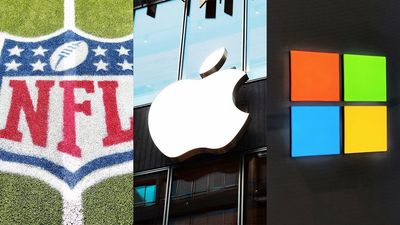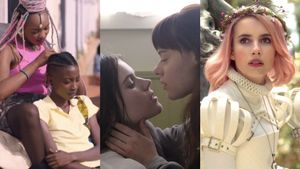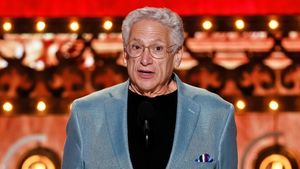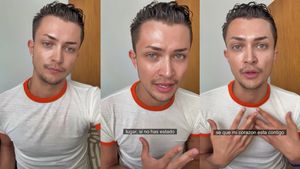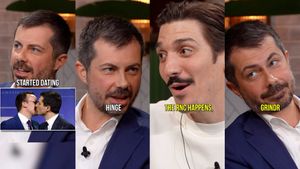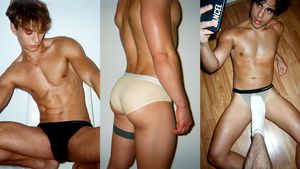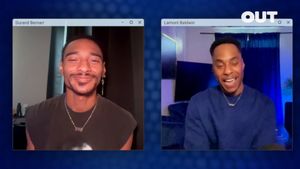The landscape of the DC Universe has gone through many changes since Superman first appeared on the cover of Action Comics no. 1 in 1938 fighting for truth, justice, and a better way of life. But this summer, DC Comics will launch its most ambitious company-wide update since the publisher rebooted its entire line of comics in 2011 with new no. 1 issues. However, DC's "soft reboot" -- which will begin in June with a bold new direction for 25 of the publisher's ongoing, bestselling fan-favorite series alongside 24 new titles -- is about more than updated costumes and fresh story concepts. This time, the publisher has set its sights on becoming the most diverse superhero universe the genre has ever known -- both inside and out.
For copublishers Dan Didio and Jim Lee, the road to achieving that goal began with an effort to diversify the creators crafting the various adventures throughout the DC Universe. While DC was once criticized for its predominately monochromatic pallette of male creators, the company now boasts a rich talent pool with a greater number of women (such as Babs Tarr and Annie Wu), LGBT (such as James Tynion IV and Steve Orlando), and people of color (such as David Walker and Bernard Chang) working on its books.
"It's as diverse a group of creators, characters, storylines, and approaches to storytelling that I've seen in the history of DC," says Lee, noting that approximately "40 percent" of the current creative teams are new talent.
Lee gives DC's editorial team a lot of credit for the new and improved range of talent shaping the publisher's new direction. "It gets down to your editors, giving them the freedom to find and bring stuff in and really play to their tastes -- play to their passions," he says. "You hire your editors for their taste, their relationships, and their ability to curate content... And I think they've done a masterful job for June."
In addition to complete makeovers for DC's iconic trinity of Superman, Batman, and Wonder Woman, the fresh lineup will include new comics starring women and heroes of color in their own solo series such as Cyborg, Black Canary, Starfire, and the first female teenage President of the United States, Beth Ross, in Prez.
DC is also making an effort to become the leader in LGBT representation in the world of comics.
 Midnighter (pictured right) -- the first gay male superhero to headline a mainstream comic -- written by out queer scribe Steve Orlando, will begin his history-making run when the series debuts in June.
Midnighter (pictured right) -- the first gay male superhero to headline a mainstream comic -- written by out queer scribe Steve Orlando, will begin his history-making run when the series debuts in June.
"This isn't a book that's going to be shy about what it is or who he is. It's fully embraced," says Didio. "What [Orlando] found most intriguing about the story is a single male character. We've seen Midnighter and [his partner] Apollo together in relationships, but what [Orlando] wants to do is tell the story about a single male character, and ultimately, what is his place in this society? How is he working with others? He's on this journey by himself, and he's making mistakes, and everything that comes along the way. I think that's really exciting."
"You'll be seeing other LGBT characters, though they will mostly be new characters, in Midnighter," adds Orlando. "Things that happen with Apollo resonate throughout the entire series, though I'm hesitant to say whether or not he has an ongoing presence in the book. However I will say anything that goes down between them is very telling to my experience as a queer person and the things that I've seen in my life. They are largely each other's first relationship, and a big part of the book is Midnighter realizing he doesn't even know how to define himself as a gay man without Apollo. I think that's something many people in the real world face."
With the recent reveal of Selina Kyle's bisexuality in Catwoman no. 39, and the announcement that bi occult detective John Constantine will be the star of his own rebooted series Constantine: The Hellblazer in June, the addition of Midnighter means DC will boast a record number of mainstream comics headlined by LGBT characters when the new line launches this summer. Though Batwoman -- the comic starirng DC's highest-profile lesbian character -- was recently canceled, Lee says the queer caped crusader won't be missing from the publisher's roster of comics for long. "There are great characters and sometimes you have to give them a rest to bring them back," he says. "We're huge fans of Batwoman. She will make a return. I'm 100 percent confident."
 Additionally, several LGBT heroes, villains, and supporting cast members will be prominently featured in a number other series. Barbara Gordon's transgender friend and former roommate Alysia Yeoh will continue to be a reoccurring character in the pages of Batgirl, while writer Daniel H. Wilson assures Green Lantern Alan Scott will retain his status as a high-profile gay superhero in Earth 2: Society. However, he will no longer be the lone out ring-slinger in this new DCU.
Additionally, several LGBT heroes, villains, and supporting cast members will be prominently featured in a number other series. Barbara Gordon's transgender friend and former roommate Alysia Yeoh will continue to be a reoccurring character in the pages of Batgirl, while writer Daniel H. Wilson assures Green Lantern Alan Scott will retain his status as a high-profile gay superhero in Earth 2: Society. However, he will no longer be the lone out ring-slinger in this new DCU.
"You may not know it yet, but you've already seen [LGBT characters] in Sinestro," says writer Cullen Bunn. "In the upcoming Sinestro annual, I get to explore some of these characters in a deeper way and that's when you're going to see some yellow lanterns [in a new light]."
Bunn teases fans hoping to find even more queer characters from light weapon-wielding lantern corps should "look to Green Lantern: Lost Army as well."
But is there a possibility we could see an LGBT character pop up down the line in DC's flagship title Justice League?
"Oh, 100 percent, absolutely. I think you could. The possibilities are endless," Justice League writer and DC Entertainment Chief Creative Officer Geoff Johns teases coyly. "We want to diversify our universe. That's one of our goals. That's why I brought Cyborg on as a member of the Justice League, and why we introduced a new Power Ring and I made her a female Hispanic."
Johns says he understands firsthand why readers need to see themselves reflected in the comics they read, and how seeing diversity in comics can help build bridges between different groups of people. That's what motivated him to create the first Middle Eastern-American Green Lantern, Simon Baz, introduced in 2012.
 "Simon Baz was a real personal character for me because my dad is Arabic and I'm Arabic-American," Johns explains. "So it was really fun to go into that because no one had ever really done that before with a mainstream character. And even though there was a lot of surprising backlash and negativity when we introduced that character, what I remember most was the day we had a big event at the Arabic-American museum in Dearborn [Michigan], where I introduced Simon and I talked to the crowd. They had a whole community come out and it was the most diverse group I'd ever seen of kids. There were Muslim kids, Christian kids, all different races, and we had a great day talking about comics and superheroes. That to me is super inspiring and the most rewarding."
"Simon Baz was a real personal character for me because my dad is Arabic and I'm Arabic-American," Johns explains. "So it was really fun to go into that because no one had ever really done that before with a mainstream character. And even though there was a lot of surprising backlash and negativity when we introduced that character, what I remember most was the day we had a big event at the Arabic-American museum in Dearborn [Michigan], where I introduced Simon and I talked to the crowd. They had a whole community come out and it was the most diverse group I'd ever seen of kids. There were Muslim kids, Christian kids, all different races, and we had a great day talking about comics and superheroes. That to me is super inspiring and the most rewarding."
The new direction is the first step of many the creative minds at DC say they hope will usher in a new golden age of diversity for the DCU.
"There's no quota or anything like that," says Lee. "If anything, June is about breaking down whatever perception people had of DC Comics, and the DC Universe, and really just going for broke."
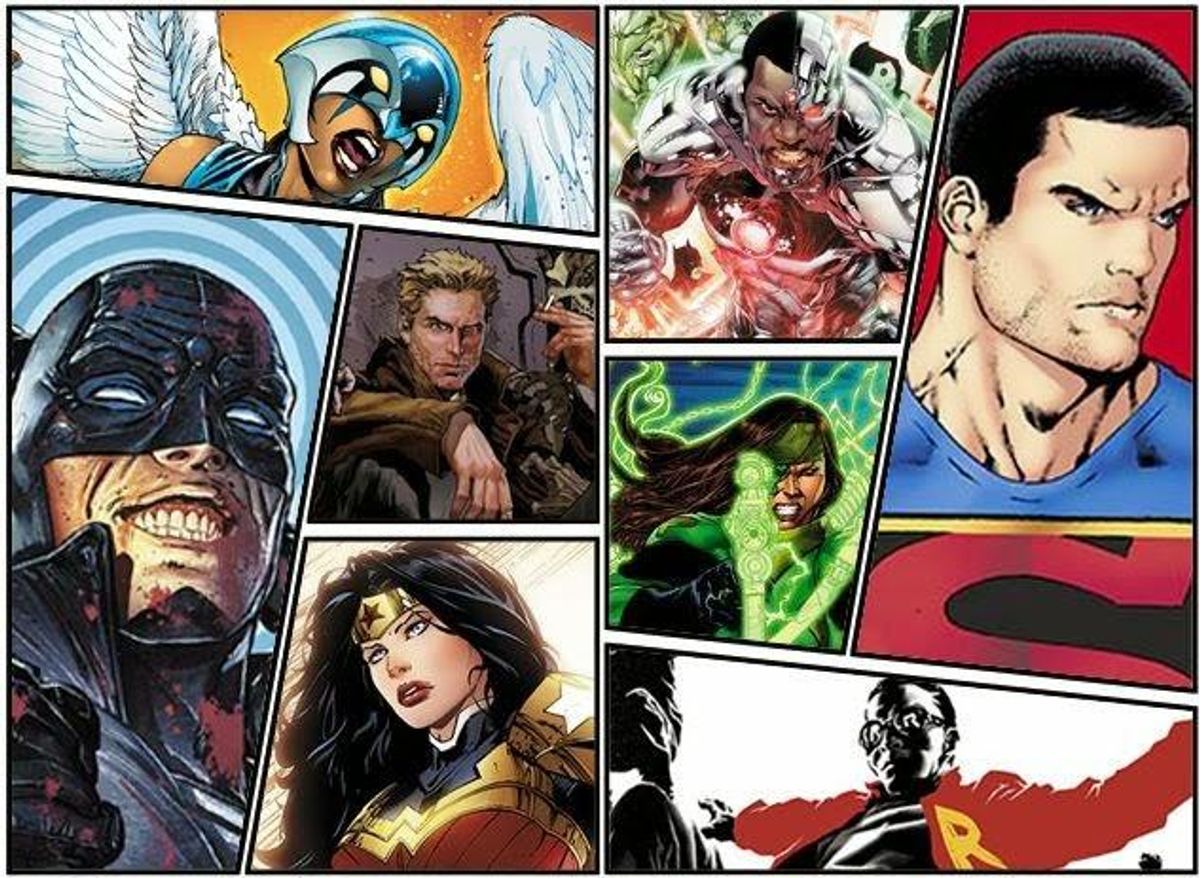


 Additionally, several LGBT heroes, villains, and supporting cast members will be prominently featured in a number other series. Barbara Gordon's transgender friend and former roommate Alysia Yeoh will continue to be a reoccurring character in the pages of Batgirl, while writer Daniel H. Wilson assures Green Lantern Alan Scott will retain his status as a high-profile gay superhero in Earth 2: Society. However, he will no longer be the lone out ring-slinger in this new DCU.
Additionally, several LGBT heroes, villains, and supporting cast members will be prominently featured in a number other series. Barbara Gordon's transgender friend and former roommate Alysia Yeoh will continue to be a reoccurring character in the pages of Batgirl, while writer Daniel H. Wilson assures Green Lantern Alan Scott will retain his status as a high-profile gay superhero in Earth 2: Society. However, he will no longer be the lone out ring-slinger in this new DCU.  "Simon Baz was a real personal character for me because my dad is Arabic and I'm Arabic-American," Johns explains. "So it was really fun to go into that because no one had ever really done that before with a mainstream character. And even though there was a lot of surprising backlash and negativity when we introduced that character, what I remember most was the day we had a big event at the Arabic-American museum in Dearborn [Michigan], where I introduced Simon and I talked to the crowd. They had a whole community come out and it was the most diverse group I'd ever seen of kids. There were Muslim kids, Christian kids, all different races, and we had a great day talking about comics and superheroes. That to me is super inspiring and the most rewarding."
"Simon Baz was a real personal character for me because my dad is Arabic and I'm Arabic-American," Johns explains. "So it was really fun to go into that because no one had ever really done that before with a mainstream character. And even though there was a lot of surprising backlash and negativity when we introduced that character, what I remember most was the day we had a big event at the Arabic-American museum in Dearborn [Michigan], where I introduced Simon and I talked to the crowd. They had a whole community come out and it was the most diverse group I'd ever seen of kids. There were Muslim kids, Christian kids, all different races, and we had a great day talking about comics and superheroes. That to me is super inspiring and the most rewarding." 






